I’ve loved Ordnance Survey maps ever since ‘O’ level Geography when we had to know how to decode the tiny symbols, and be able to recognise the difference between deciduous, coniferous and mixed woodland and, my favourite, a church with a spire and a church with a tower.
What I didn’t know until this week was that on the nineteenth-century OS maps, there was a symbol for tenter grounds (together with symbols for iron works, glass works, lime kilns, and smithies).
I get the feeling that a reworked map of the UK this week would have shown the whole of it as one huge tenter ground, with people on tenterhooks everywhere.
[Blankets in Witney in the 1920s being fixed by ‘tuckers’ to frames with tenter hooks after bleaching on the ground in sunlight or in bleaching sheds]
Tenterhooks were used to affix a piece of cloth by the selvedges to a tenter, an outdoor wooden frame on which cloth, eg linen or wool, was stretched to dry evenly and without shrinking, a little like blocking with knitting.
[Crowther Bruce Mill Road, Marsden, Yorks]
This carried on until the early C20; it’s now done in finishing works but still using the same principle. However the phrase ‘on tenterhooks’ is still in widespread use, and is mostly associated with what a lot of people, whose nerves have been stretched this week, have been experiencing.
There was a perfect storm of sports-related anxiety, what with watching British tennis players at Wimbledon, England at the Euros, Portugal and France taking penalties, and Mark ‘will-he-won’t-he win-the-record-breaking-stage’ Cavendish at the Tour de France. (Not to mention crying with Andy Murray and the whole of Centre Court.)
But these events were small-fry compared to the real issue of the election (compounded by what’s going on in France and the outcome of today’s second round of voting). On Wednesday, I could hardly bring myself to read Zadie Smith proclaiming ‘here comes the sun’ just in case it wasn’t going to happen. But it has. Maybe not literally, it’s still bloody raining, but definitely metaphorically. And I couldn’t be happier. I remember the jubilation the morning after Labour got in in 1997, but this time it it pure relief.
Interestingly, the word ‘tenter’ comes from the Latin tendere which not only means to stretch or stretch out, but also to extend, as in tendering a resignation. Who knew that election anxiety and election elation could be encapsulated in one word? And now we have Keir Starmer, dubbed the ‘nowhere man’ by the today’s nowhere-woman, having read the mood correctly, unlike others who repeated the errors of the politicians of the 1960s in not comprehending contemporary social forces.
At least political commentary then could sometimes be more fun than now. Q: “What would you like to see a new government bring in?”. A: “More wine”.
Looking at the history of tenter hooks, grounds, and frames has proved to be a good absorbing distraction from all this, and was complemented by reading Thunderclap by Laura Cumming who writes so well and so evocatively about C17 Dutch art.
[Tenter fields on 1676 map of Spitalfields - there’s still a East Tenter Street, a West Tenter Street, and Tenter Ground]
In her book I found lovely descriptions and images of bleaching grounds, first cousins of tenter grounds or fields, in that both were often covered with carefully stretched or laid out lengths of woven fabric which look like enormous quilts or outdoor textile installations (or a huge series of cricket wickets).
What a sight this would have been. One summer in Aldeburgh, I saw that someone was drying their clothes on a bush in a garden, a traditional method, and thought that was pretty great, but I would now love to see whole fields full of drying cloth, using the sun’s 'purifying rays’ to bleach them.
[‘Women Bleaching Linen Near a Walled Town’, Master of the Small Landscapes (c. 1560)]
[‘View of Haarlem with Bleaching Grounds’ (c1670-1675), Jacob van Ruisdael]
Laura Cumming examines the work of artists such as Fabritius, de Hooch, Vermeer, Coorte, ‘the marvellously zestful’ Rachel Ruysch, and Jacob van Ruisdael who, she says, ‘paints the bleaching fields like nobody else’. There are beautiful descriptions and insightful analysis plus some polite but firm repudiation of many judgements and theories held by the art world.
[detail]
She has a gift for celebrating their ‘modest yet exhilarating’ paintings, and zooms in on details which might escape others. This calm, poised, often domestic Dutch art has been a wonderful counter-balance to the mad drama and media overload of the week’s political events.
And my nerves are a lot less taut now.
Happy Sunday!
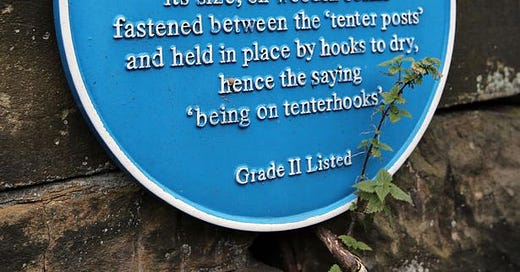



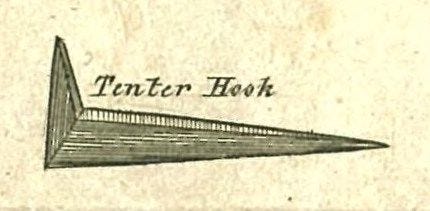



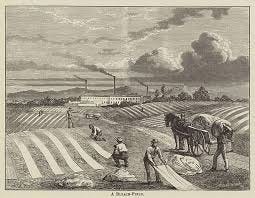
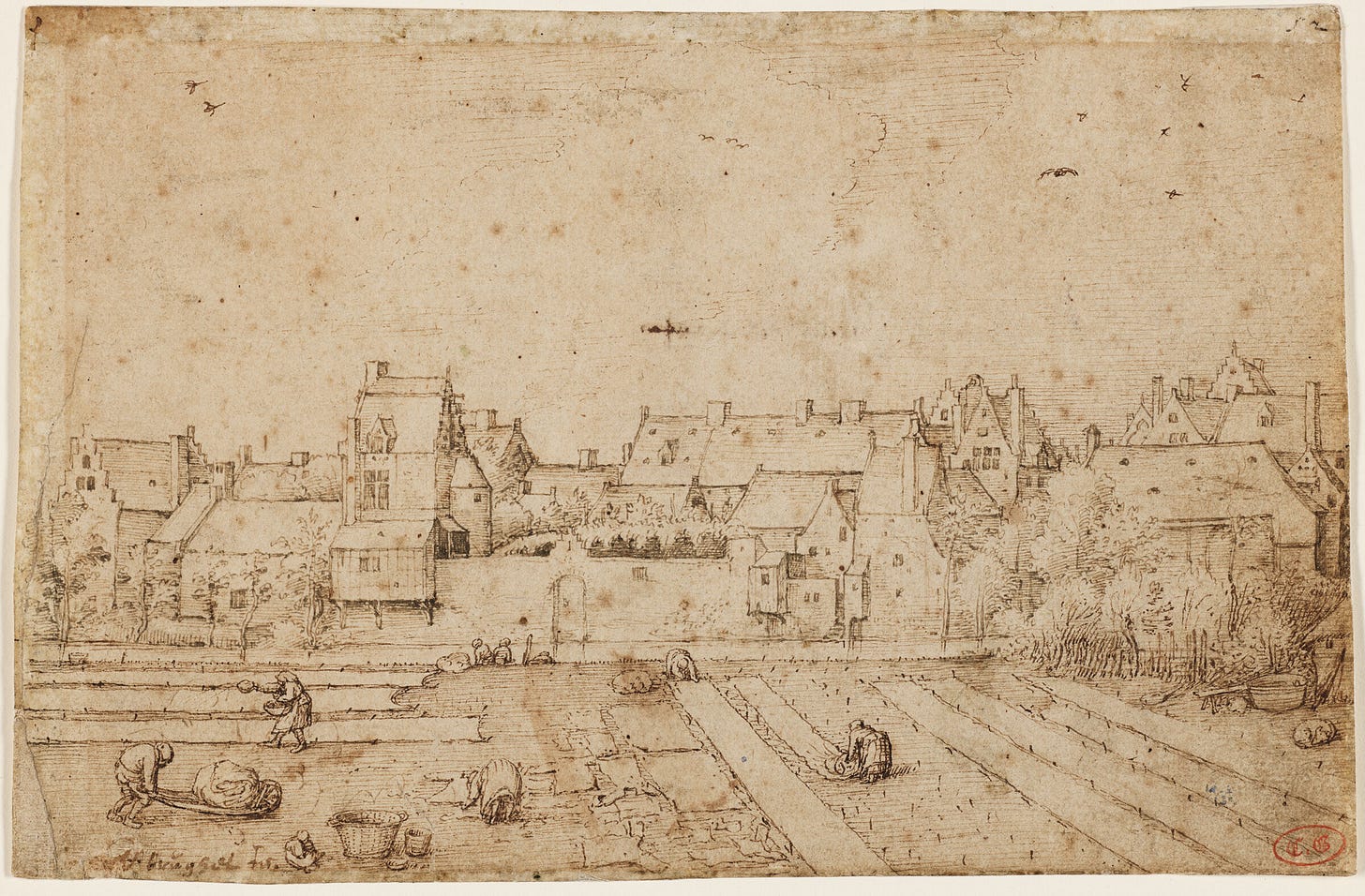
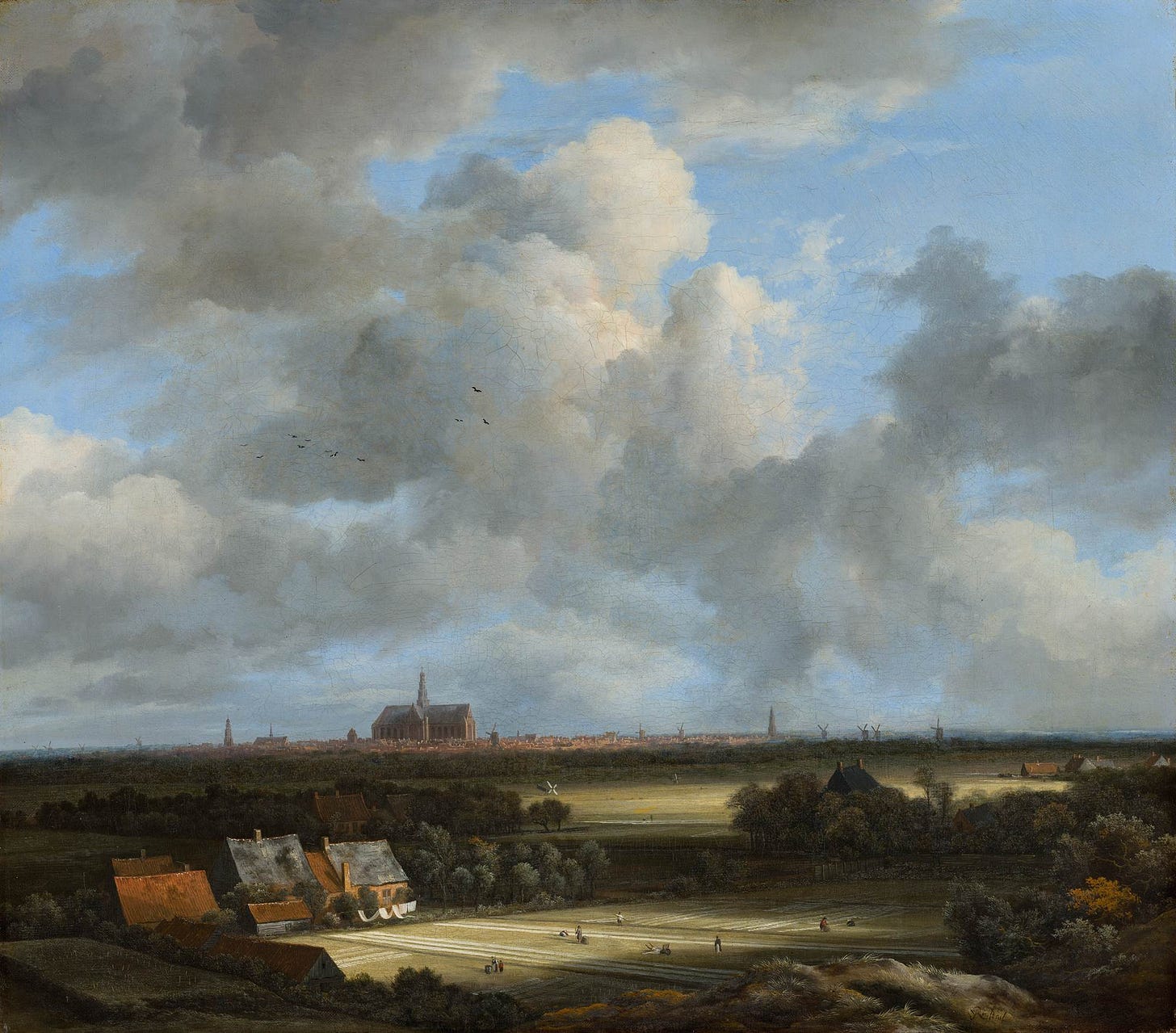
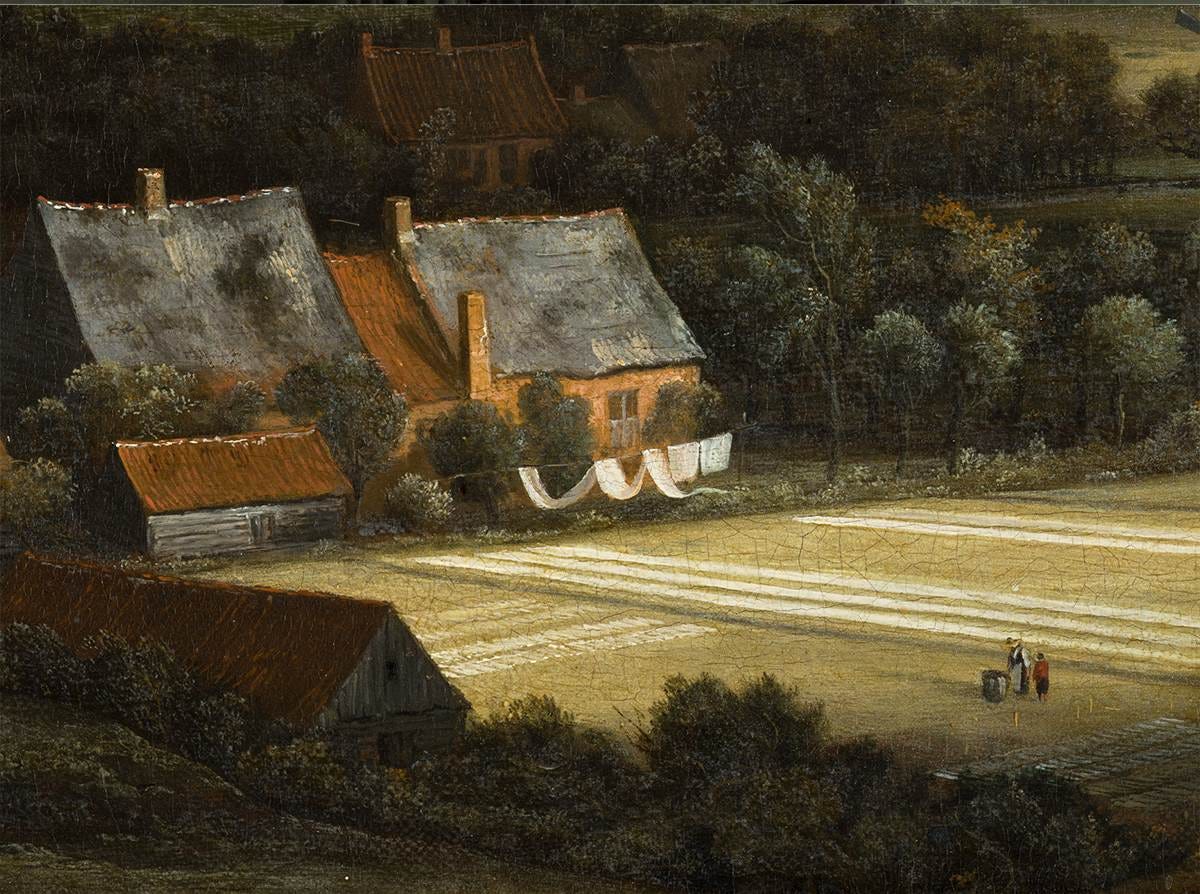
Such an interesting article redolent with links to my own family history. Many of my maternal ancestors were clothiers in Yorkshire and tenter grounds were important. I also love the 1676 map of the tenter grounds in Spitalfields which shows Fashion St. My paternal great grandparents lived on Fashion St in the late 19th century...
Yet again a very interesting piece, Jane, and I love what I learned from you. Thank you. I wonder if that is the origin of the name of Tenterden in Kent?
For a dissertation while in Liverpool I also studied old os maps and found that many city centre streets started out as roperies.